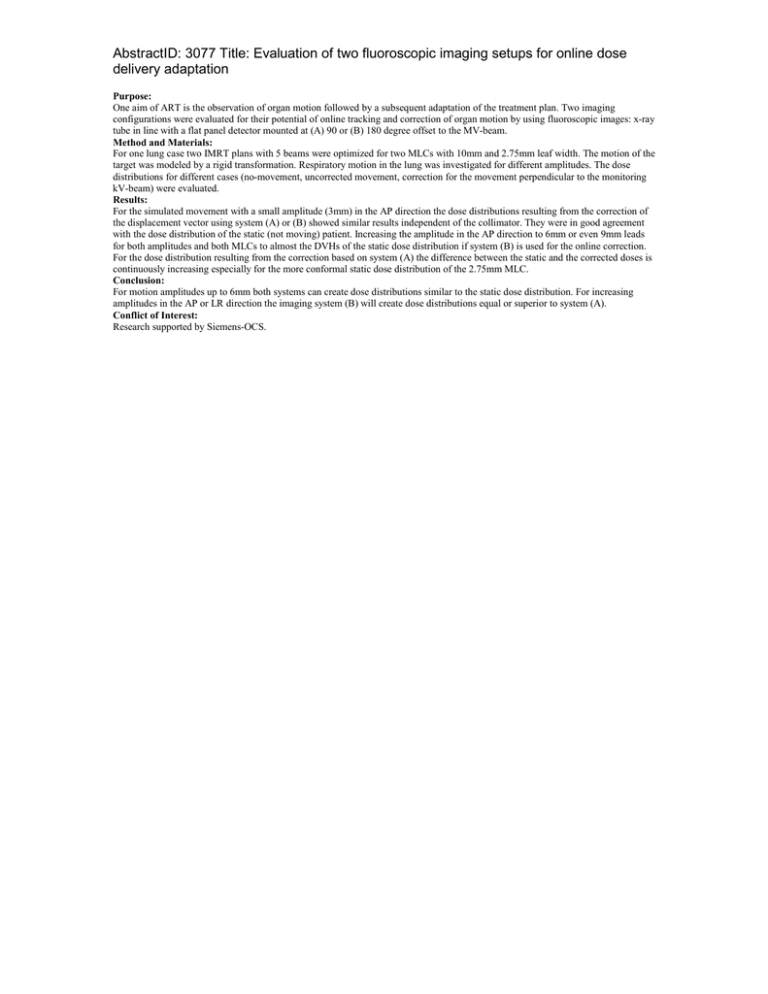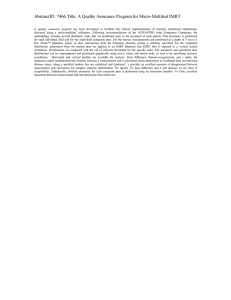AbstractID: 3077 Title: Evaluation of two fluoroscopic imaging setups for... delivery adaptation
advertisement

AbstractID: 3077 Title: Evaluation of two fluoroscopic imaging setups for online dose delivery adaptation Purpose: One aim of ART is the observation of organ motion followed by a subsequent adaptation of the treatment plan. Two imaging configurations were evaluated for their potential of online tracking and correction of organ motion by using fluoroscopic images: x-ray tube in line with a flat panel detector mounted at (A) 90 or (B) 180 degree offset to the MV-beam. Method and Materials: For one lung case two IMRT plans with 5 beams were optimized for two MLCs with 10mm and 2.75mm leaf width. The motion of the target was modeled by a rigid transformation. Respiratory motion in the lung was investigated for different amplitudes. The dose distributions for different cases (no-movement, uncorrected movement, correction for the movement perpendicular to the monitoring kV-beam) were evaluated. Results: For the simulated movement with a small amplitude (3mm) in the AP direction the dose distributions resulting from the correction of the displacement vector using system (A) or (B) showed similar results independent of the collimator. They were in good agreement with the dose distribution of the static (not moving) patient. Increasing the amplitude in the AP direction to 6mm or even 9mm leads for both amplitudes and both MLCs to almost the DVHs of the static dose distribution if system (B) is used for the online correction. For the dose distribution resulting from the correction based on system (A) the difference between the static and the corrected doses is continuously increasing especially for the more conformal static dose distribution of the 2.75mm MLC. Conclusion: For motion amplitudes up to 6mm both systems can create dose distributions similar to the static dose distribution. For increasing amplitudes in the AP or LR direction the imaging system (B) will create dose distributions equal or superior to system (A). Conflict of Interest: Research supported by Siemens-OCS.



